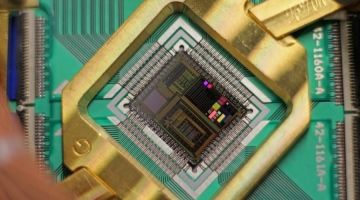I have fond memories of both of my grandfathers as a boy growing up in the American Southwest. My mother’s father was a master gardener, able to grow plants in an arid environment that should have thrived only in tropical rainforests. Botanists from the Department of Biology at the local university surveyed his garden, and promptly asked him to help with problems they were experiencing in their greenhouses. There were large fruit trees scattered throughout his backyard perfect for climbing and eating apples, peaches, or cherries fresh off the branch. The foliage of these trees was dense, making it possible to hide and pounce down on unsuspecting younger brothers or cousins wandering too near the danger zone. Not saying I ever did such a thing, just saying it was possible. You know?
Every Friday night we ate dinner at my mother’s parents’ house. I poignantly remember an after dinner ritual. My grandfather would retire to his recliner, toothpick in his mouth, and instruct one of his grandchildren to turn on the bulky multicomponent console color television with built in radio, turntable, and speakers. It was time to watch Friday night boxing. There was no remote control, we kids were the channel changers and volume knob manipulators. My grandfather was usually not an emotional man, but he would become quite animated and occasionally agitated watching the fight, particularly if there was a boxer he favored in the match. The grandchildren enjoyed watching him more than we did the pugilists on the flickering television screen.
My father’s father, on the other hand, was a wrestling fan. By wrestling, I mean the wrestling seen on Saturday afternoon television featuring men in tight shorts, outlandish costumes, some wearing hoods or masks over their heads, entering the ring wearing colorful capes to either wild applause or catcalls and hisses, bouncing off the ropes to clothesline their onrushing opponent, and jumping from the turnbuckles to land on their hapless opponent laid out on the mat below. Even to a boy it was obvious bad theater and fraud, but I enjoyed watching my grandfather yelling at the television, berating the bad guys and the referees during these spectacles. He knew the name of every hero and villain, and he would hurl epitaphs at the masked men in tight wrestling suites while openly cheering for those he admired. He particularly loved the chaos of tag team matches, guaranteed to degenerate into a free-for-all with all the combatants in the ring, throwing chairs, and occasionally even body slamming the referee to the canvas. I still remember some of the names and can mentally visualize the antics; Gene Kiniski, The Sheik, Ray Mendoza, Dory Funk Jr., Terry Funk, Mad Dog Vachon, Hard Boiled Haggarty, Raul Reyes, Killer Kowalski, and Johnny Valentine. As I grew older I mistakenly pointed out these matches were all rehearsed and the outcomes were scripted; this wasn’t real sport. He fixed me with a glare, informed me I was getting, “a little too big for my britches”, and asked me if I thought 250 lb. men climbing to the top of the ropes to hurl themselves on their foe below, or the prostrate , seemingly stunned wrestler on the mat absorbing the flying blow delivered from above should be considered as anything less than athletic.
Good point. I wouldn’t want to do it.
Continue reading “The Wrestler” »















